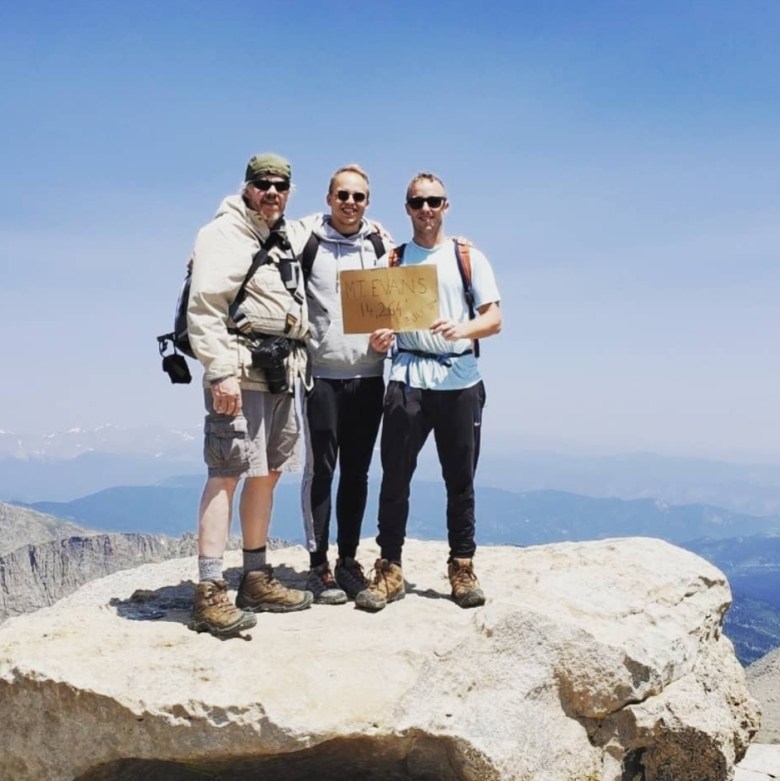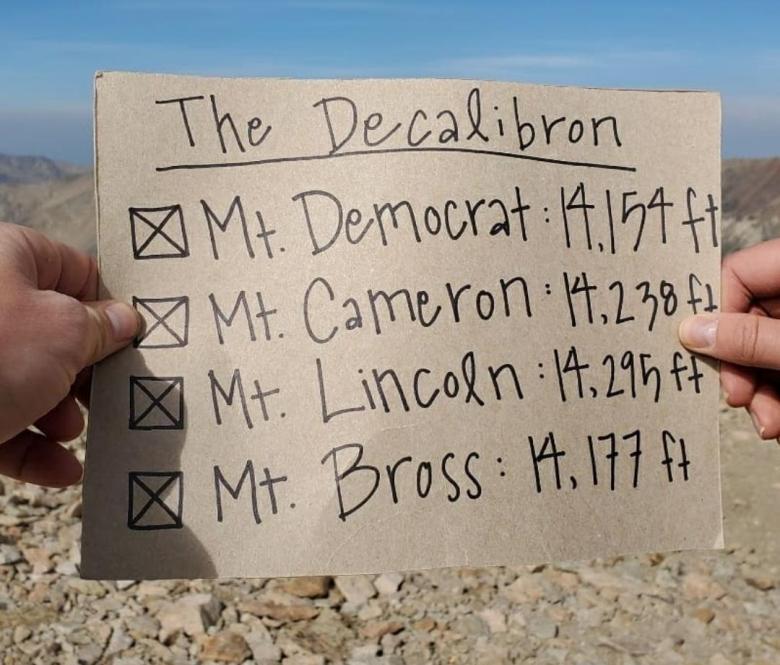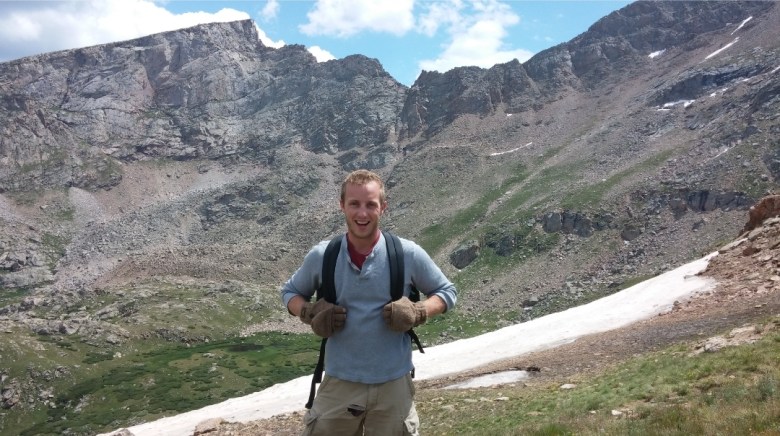The Rocky Mountains dazzle natives and transplants alike with their stunning peaks and seemingly endless hiking trails. From quick outings to day hikes, it’s easy to get out there and explore the beautiful Colorado landscape.
For diehards, 14ers are the Goliaths just waiting to be conquered. But they aren’t to be taken lightly. If you’re truly serious about taking your hiking skills to the next level, there are a few things to know before taking on these mountain titans around the state.
We asked a local experienced hiker to provide tips about 14ers, including where to start, what to take with you and which are the toughest to tackle.
What is a 14er?
A 14er, or fourteener, is a mountain with a peak more than 14,000 feet above sea level.
There are nearly 100 14ers in the United States (all in the West). Colorado boasts the most of any state with 53 (There are 58 peaks above 14,000 feet in Colorado, but to qualify as an official “14er” in the hiking community, a peak must have at least 300 feet of prominence, which is the amount of elevation it rises above the lowest saddle that connects to the nearest higher peak, according to 14er.com).
Alaska has 29 and California has 12.
Keep in mind: all 14ers you hike in Colorado won’t require you to climb a full 14,000 feet. With Denver sitting at 5,280 feet, you’re already at a decent head start before you get to the base of your 14er of choice. Pikes Peak, for example, has a base elevation of 7,400 feet.
Some 14ers can be tackled in a few hours, while others might take up to two days.
A full list of every 14er in the Centennial State can be found at www.14ers.com.
Where to start? Tips from a seasoned hiker
Don’t go alone. For first-timers, tag along with an experienced hiker or consider one of the many guided hike companies along the Front Range, such as Colorado Adventure Guides.
A local hiker, Zachary Lundgren, grew up in the mountains of Evergreen. After graduating from CU Boulder and a teaching stint at the University of Northern Colorado, he now works in communications for the Colorado School of Mines.
So far, he’s summited about a dozen 14ers and has some advice for those flirting with the idea.
Lundgren said to stay away from Sunlight Peak due to a dangerous “leap of faith” at the summit, where hikers must hop between rocks at 14,000 feet to finish the hike. He also suggests waiting to do Mount Sneffels because “it’s the hardest hike I’ve ever done.”
But he recommends some good starting points below, with each taking about four to seven hours to complete round-trip.
Mount Bierstadt
Lundgren said Bierstadt is commonly known as “your first 14er” and should be the universal first choice. Only about an hour and a half drive from Denver, it is one of the safer choices for starters exposure-wise. There are often crowds, he said, so prepare for that. But with the trailhead conveniently located off Guanella Pass, it’s an easy one to knock out first, he said.
“Mount Bierstadt trail takes you a little over seven miles as you gain 2,700 feet to a summit with amazing views of countless peaks,” Lundgren said. “For the truly bold, you can also take the ‘sawtooth’ route and bag Mount Blue Sky as well, but I’d recommend waiting for this one as the infamous ‘sawtooth’ has some serious exposure.”
Mount Blue Sky

Formerly known as Mount Evans, this 14er is one of the most notable peaks in the Front Range and can be seen from most of the Denver area. It’s another close one — only about an hour’s drive from Denver. Lundgren said Mount Blue Sky takes you on a five-mile horseshoe trail that gains just over 2,000 feet of elevation gain. Plus, you can bag a 13er in Mount Spalding along the way, he added.
“Keep an eye out for mountain goats along this trail as they’re common throughout this area,” Lundgren said. “Oh, and all those cars and families you might see at the summit? Mount Blue Sky is one of two 14ers that you can actually drive to the top of; the other being Pikes Peak near Colorado Springs. But trust me, it’s much more rewarding to take the trail to the top.”
Mount Quandary
Quandary is a little farther away (just south of Breckenridge), and is a little harder, Lundgren said. You eclipse 3,300 feet of elevation in over six miles to the summit.
“Mountain goats are also a common sight on this trail and definitely aren’t shy,” he said. “Another unique aspect of Quandary is that this is one of the more common winter summits for locals as there’s very little avalanche risk on the route. But it’s definitely advisable to tackle this one in the summer first and always check for local weather conditions before setting out on any hike.”
The DeCaLiBron

“Short on time but looking to bag a few peaks? Then you need to check out the vaunted DeCaLiBron. This funny name represents a unique route where you can bag four (or three, there’s still some debate) 14ers in one go,” Lundgren said. “Hike Mount Democrat, Cameron, Lincoln, and Bross on a seven-mile trail north of Fairplay that ascends just over 3,000 feet in elevation. Some claim that Mount Cameron is not officially a 14er as it has only 118 feet of prominence from its parent peak, technically classifying it as a sub-peak. However, technicalities aside, I still tell my friends I bagged four 14ers in a day. You should, too.”
For a full list of peaks in Colorado, visit 14er.com/14ers or 14ers.com/13ers.
What should you bring with you?
Tackling a 14er is no regular day hike. It requires much more time, further distance traveled and more energy spent. The last thing you want is to be unprepared halfway through or if something were to go wrong.
Though technically you could climb 14ers in the winter or spend overnight trips tackling them, we’ll cover the basics for a same-day, summertime 14er trip.
According to 14er.com, the main gear you should bring with you includes:
- Plenty of food and water
- A hat
- Gloves
- Sunscreen
- Gloves
- Synthetic shirts and synthetic long underwear
- Fleece or windbreaker jacket
- Waterproof shell/jacket
- Nylon shorts
- Hiking pants
- Hiking boots / scrambling shoes
- Hiking socks
- Watch
- Pack (that fits the hike/climb)
- Headlamp
- Sunglasses
- Knife or multi-tool
- A water bladder or bottles
- Compass
- GPS
- Maps
- Tape
- Whistle
- Matches/lighter
- TP (in Ziploc bag)
- Trash Bag
- Cell phone
- Extra batteries
- Emergency supplies, including a first-aid kit
- SPOT or other personal locator device
- Optional: Trekking poles
- Optional: Water filter
- Optional: Satellite Phone (expensive but extremely valuable in an emergency)
For a list of winter and/or overnight gear, visit www.14ers.com/gearlist.php.
Do you have 14er tips or opinions about where locals should begin? Email jrenfrow@coloradocommunitymedia.com with your takes.


